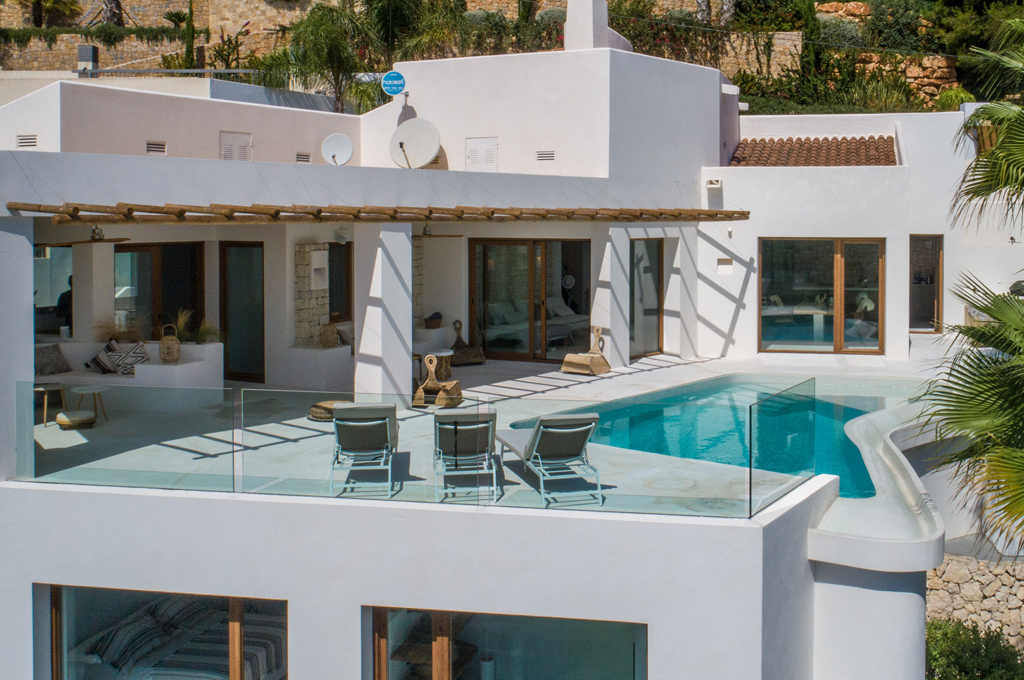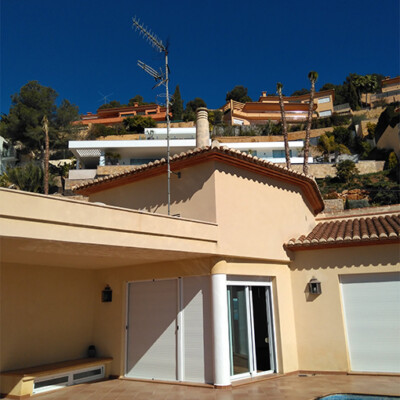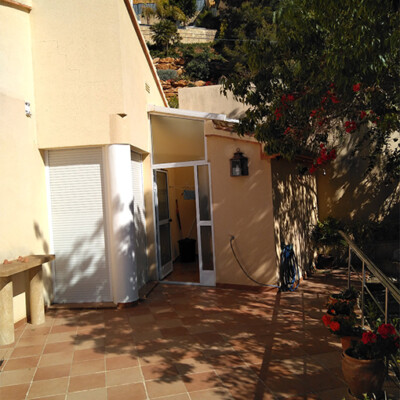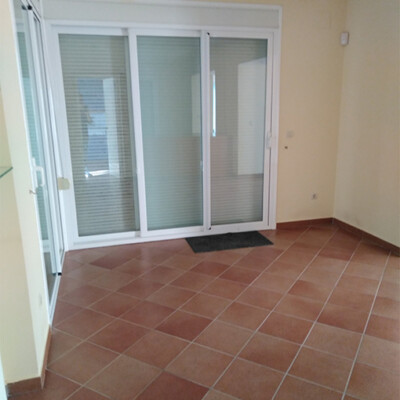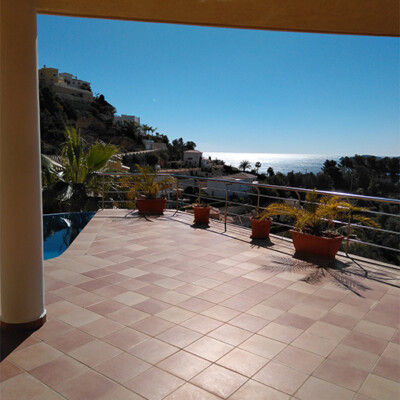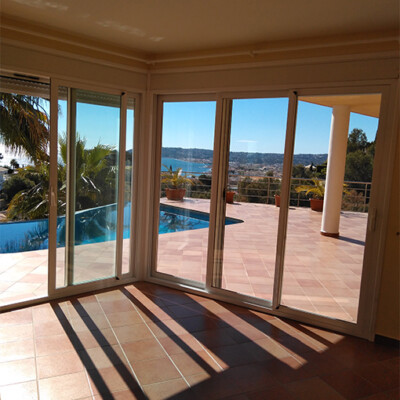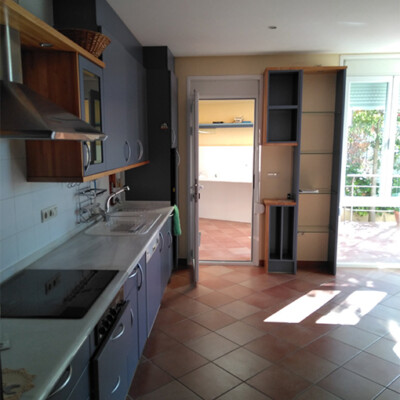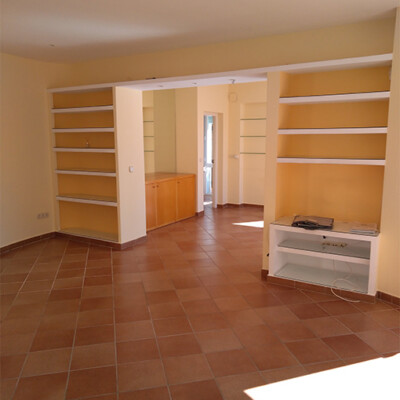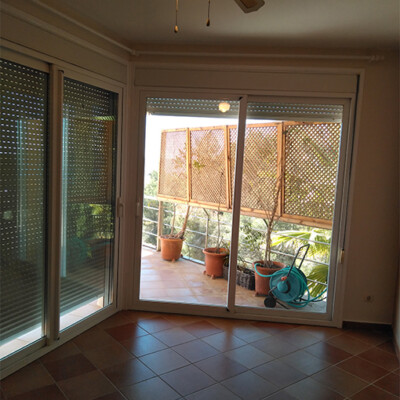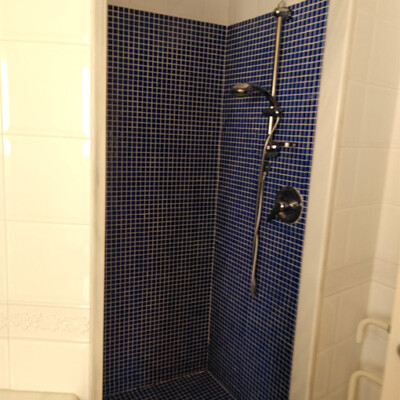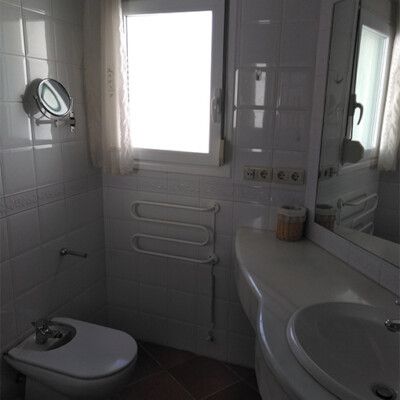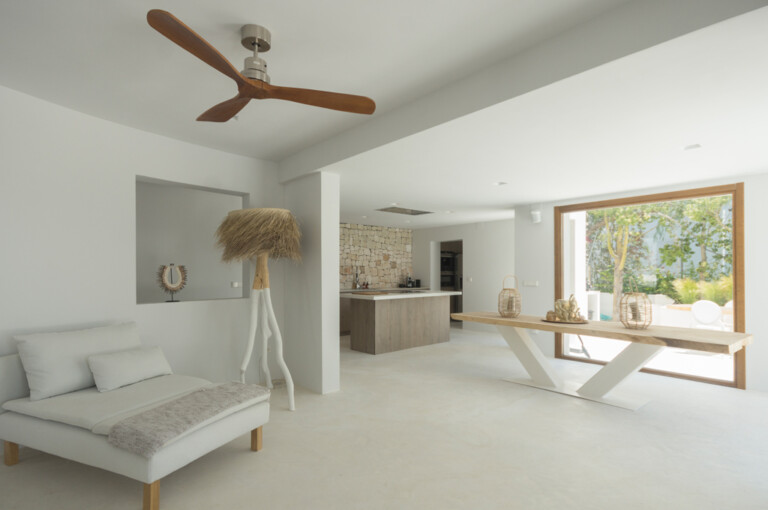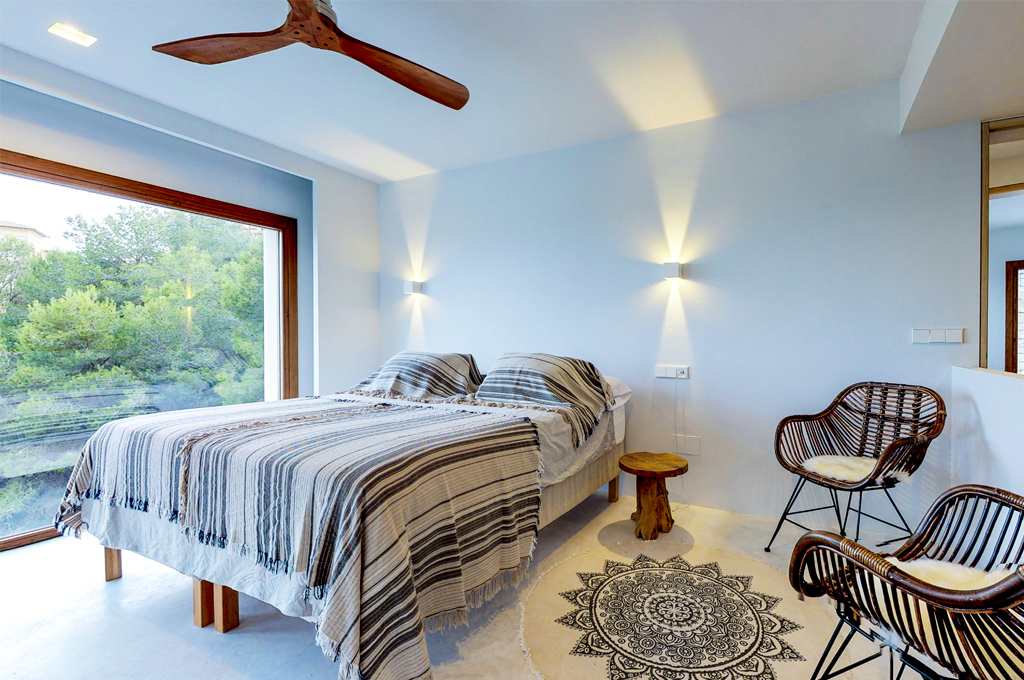After finishing the project for the Boho Hotel in Denia, one of his clients contacted us to visit a property he wanted to buy in Xavia. He liked the warmth of the spaces of the hotel, its materiality. We visited together the building, located on a property with magnificent views of the bay of Xabia. The building was a nondescript construction of the 90s, planned without much criteria, with a structural system of concrete porticos with circular pillars, a hybrid without logic between what should be a traditional house built with the constructive paradigms of the most elementary industrial construction, including pvc carpentry and the desire to be a powerful villa.
However, the plot, on a steep slope, had forced to develop the building on several floors, giving rise to great possibilities yet to be discovered. Our first impression was resounding; we immediately discovered the possibilities that the building had, but the actions to be undertaken implied an increase in the budget originally estimated by the property. As the ideas freely presented captured his emotion, he decided to commission us to do a preliminary project to evaluate the consequences and scope of the work.
Two weeks later we met with the plans of the proposal and a model depicting the transformation. A surgical operation in which, without modifying structural elements, the program of needs proposed by the property was deployed through the floors that descended in height through the plot. Access from Penaguila Street became a walk through a garden instead of a deserted ramp of bare concrete. The lobby integrated the exterior garden and the house, giving way to a living room open to the views where living and kitchen spaces are concatenated, always connected to the outside, populated by small rooms with their own character, always associated with the garden and the possible views.
Each room would have a bathroom and dressing room en suite and taking advantage of its location on the ground floor, specific openings were perforated in the facade to connect them with the outside garden, giving each room its own character.

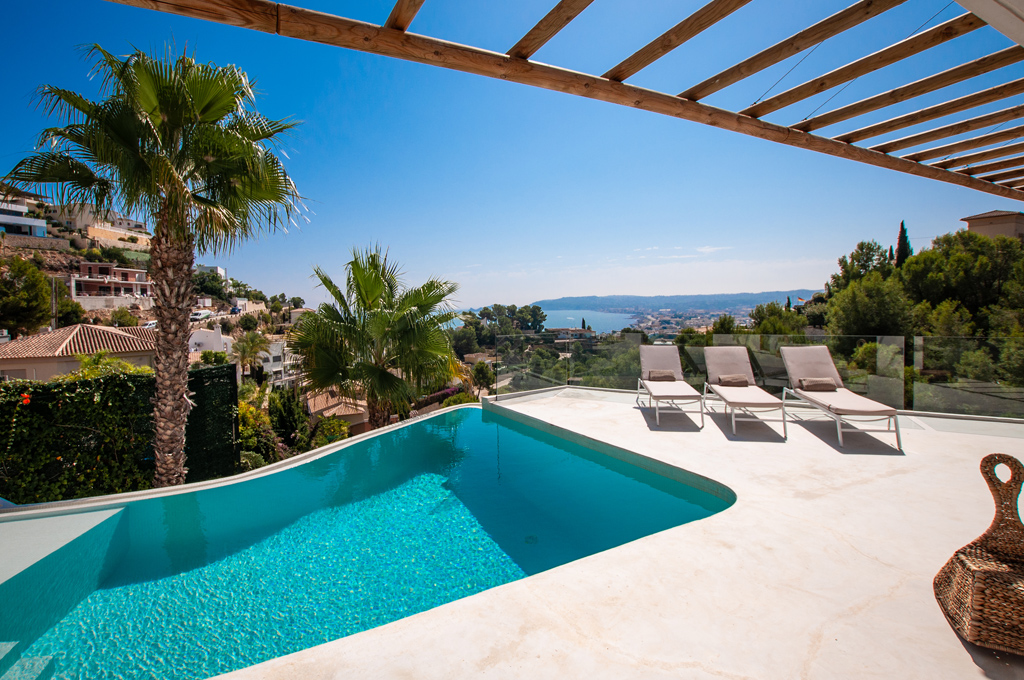
A reduced but warm palette of materials made it possible to control the budget and transform the body of the building into a construction associated with the landscape. By integrating the round concrete pillars into the thickness of the walls, the building takes on another scale. The continuity between interior and exterior spaces is reinforced by the precise planning of openings to connect interior and exterior and the use of a continuous white concrete pavement. The swimming pool is integrated into this color palette, becoming an element of the landscape, its coloring subject to the variations of the weather.
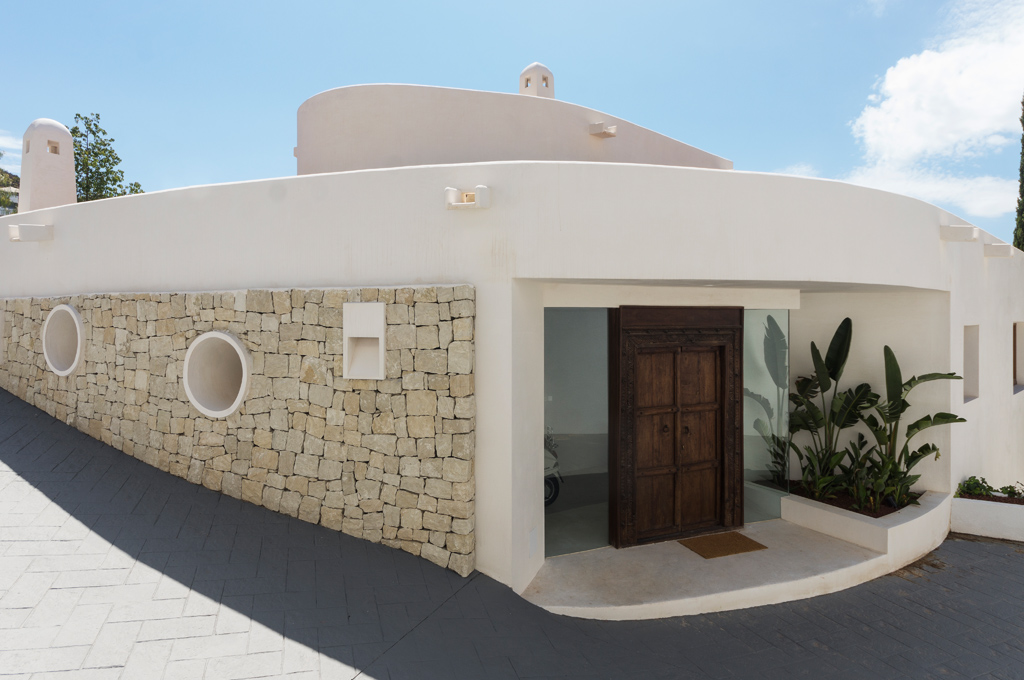
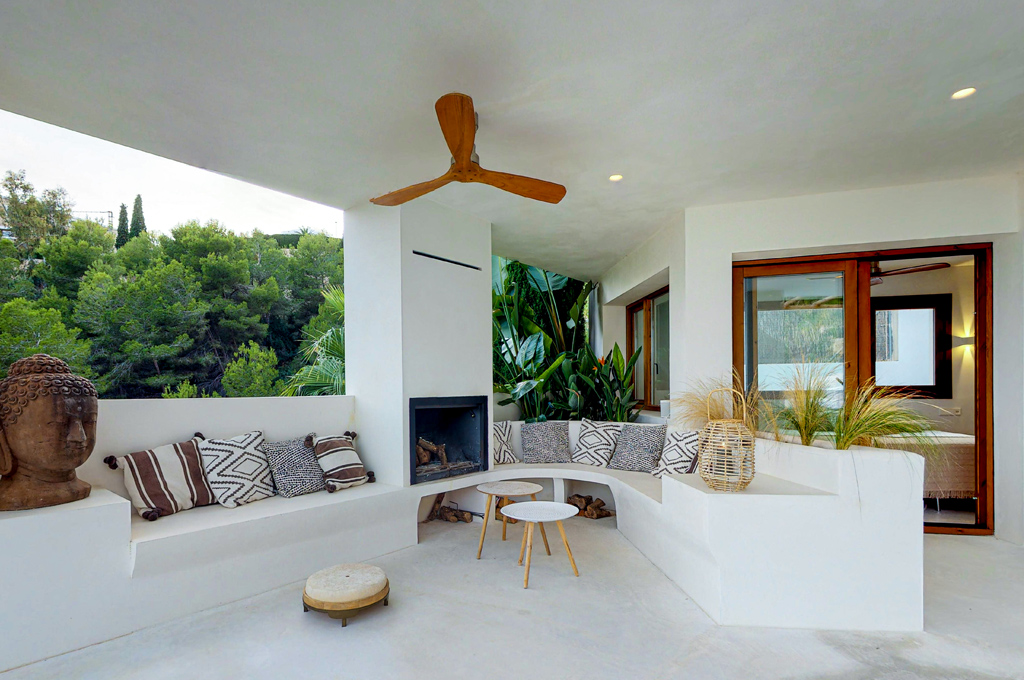
The use of wood in the carpentry and special construction elements such as the staircase and traditional stone cladding in strategic points of the house, as well as the care in developing the garden in association with the interior uses allowed us to transform the building into something personally associated with the tastes of the owner and integrate it into the landscape.

